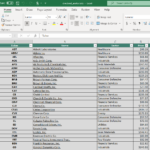Some high yield market participants claim the days of +1,000-basis-point (bps) spreads are behind us. Citing improved credit quality, aggressive Fed intervention, and a persistent shortage of supply, they argue that future recessions will not push high yield spreads to the extremes seen in 2020 or in prior downturns. But a closer, data-driven examination reveals that these arguments are overstated or flawed. In fact, conditions remain firmly in place for spreads to breach +1,000 bps again in the next recession, making it a mistake to dismiss that possibility too easily.
During the most recent US recession, the risk premium over default-risk-free Treasury bonds tripled in a period of less than three months. The ICE BofA US High Yield Index’s option-adjusted spread versus (OAS) widened from +360 bps on December 31, 2019 to +1,087 bps on March 23, 2023. Over that interval, the high yield index posted a dispiriting -20.56% total return, which compared unfavorably with fixed income alternatives such as the investment grade ICE BofA US Corporate Index at -9.97% and the ICE BofA US Mortgage Backed Security Index at 1.71%.
With that experience still fresh in institutional investors’ minds, some high yield managers are understandably talking down expectations that the OAS will widen to as much as +1,000 bps during the next recession. Times have changed, they say, since the recessions of 1990 to 1991 and 2001, when the spread also surpassed +1,000 bps. Barring an economic contraction as severe as the 2008 to 2009 Great Recession, a repeat of that rough patch’s +2,147 bps peak spread is unlikely.
Institutional gatekeepers quite reasonably expect something more than a mere assertion that things will be different this time around. Accordingly, high yield marketers have devised three rationales for proclaiming that the OAS will max out at 600 to 800 bps in the next recession:
Better high yield index credit quality than in the past.
Fed intervention aimed at keeping the spread well below past maximum levels — the “Fed put” hypothesis.
Effect of a persistent shortage of supply of high yield bonds.
All three are plausible on their face, but none hold up well upon close examination.
Better Quality Than in Past
This argument’s underlying notion is correct. Bonds with the top-tier speculative-grade rating, BB, have narrower spreads and widen out less during recessions than those rated lower: B, CCC, CC, and C.[1] Therefore, if the high yield index is more concentrated in BBs than in a given past recession, it follows that in a future recession of equivalent magnitude the index’s overall spread should widen by less than in the earlier instance.
The ICE BofA US High Yield Index does indeed have a larger BB component than in the past, defining the past as the average from the inception date of the index’s rating subindexes, December 31, 1996 through December 31, 2024. The BB share of total market value averaged 44.53% over that period. By contrast, the figure stood at 53.55% on April 17, 2025, the observation date I used in a recent analysis.
The April 17, 2025 BB share was only slightly higher than on March 23, 2020, the date of the maximum high yield OAS during the most recent recession. Basing the analysis on the most recent recession avoids comparability problems that could arise from changes that may have occurred in the rating agencies’ standards over a longer period.
For each rating category in the index, I calculated a weighted-average OAS based on the spreads of the bonds within the category. Then, assuming a recession of comparable quality to the 2020 downturn, I applied the weighted-average OAS to the April 17, 2025 ratings mix. The projected index spread came to not +600 bps or +800 bps, but +1,093 bps.
That projection’s small excess over the last recession’s +1,087 bps maximum was attributable to higher concentrations in the two lowest rating categories, CC and C, than on March 23, 2020. The key point, however, is that the index’s much talked about improvement in ratings mix is not substantial enough to prevent a widening to +1,000 bps or more during the next recession.
Fed Put
Although the Fed’s legislative mandate is to maintain stable prices consistent with full employment — rather than to manage the spread-versus-Treasuries on high yield bonds — the central bank does pay attention to whether debt financing is available to companies that lack top credit ratings. The historical record displayed in the table shows, however, that intervention in the form of an initial reduction of the Fed funds rate does not stop spread-widening dead in its tracks. Fed easing may prevent the high yield spread from widening as much as it would have without the intervention, but not, judging by experience, from widening to at least +1,000 bps.

Persistent Supply Shortage
Like the others, the persistent supply shortage rationale contains a kernel of truth. On our April 17, 2025 observation date, the ICE BofA US High Yield Index’s total face amount was $1.4 trillion, unchanged from 10 years earlier. To a substantial extent, new issuance has migrated to leveraged loans and, in the last few years, to private credit. A large new issue volume is required just to keep outstandings from declining as bonds mature, get called, default, and rise to investment grade. Stagnant supply in the face of growing investable wealth is a recipe for chronic overvaluation that could curtail spread-widening in a recession.
On the face of it, the supply-shortage argument is supported by the recent history of actual spreads on the high yield index, compared with fair values estimated by my econometric model of the spread. Historically, the actual spread frequently swung back and forth from cheaper then to richer and then fair value. From October 2022 through March 2025, however, the actual spread was less than fair value in every single month, in some cases by upwards of 200 basis points. It would not seem unreasonable, therefore, to contend that when fair value next widens to +1,000 bps, the actual spread will lag at, say, +800 bps.
The flaw in that reasoning arises from a pattern observed in the October 2022 to March 2025 period of continuous high yield overvaluation. There was a decided tendency, albeit in a small sample, for the overvaluation to decrease when the actual spread increased. Most dramatically, when the actual OAS widened by 39 bps in October 2023, the shortfall of actual OAS versus fair value dropped by 100 bps.
This suggests that when the next onset of recession causes the actual spread to widen by hundreds of basis points, the supply shortage will not act as a firewall against convergence with a fair value of +1,000 bps or more. Instead of supply being too small to satisfy demand except at excessive valuations, there will be more sellers than the buyers can accommodate except at spreads much greater than fair value.
Key Takeaway
There are valid rationales for a strategic allocation to high yield bonds, including their high current yield and low correlation with both investment grade bonds and equities. Tactical increases in high yield exposure can at times be justified on grounds of valuation or economic outlook. High yield asset gatherers consequently have no need to promote the asset class based on assertions that may not stand up to scrutiny, such as, “We will never again see a +1,000-bp spread.”
[1] Ratings discussed herein are ICE Indices Composite Ratings, derived from ratings of Standard & Poor’s, of Fitch Ratings, and of Moody’s Investors, which uses a different but parallel notation system.


























